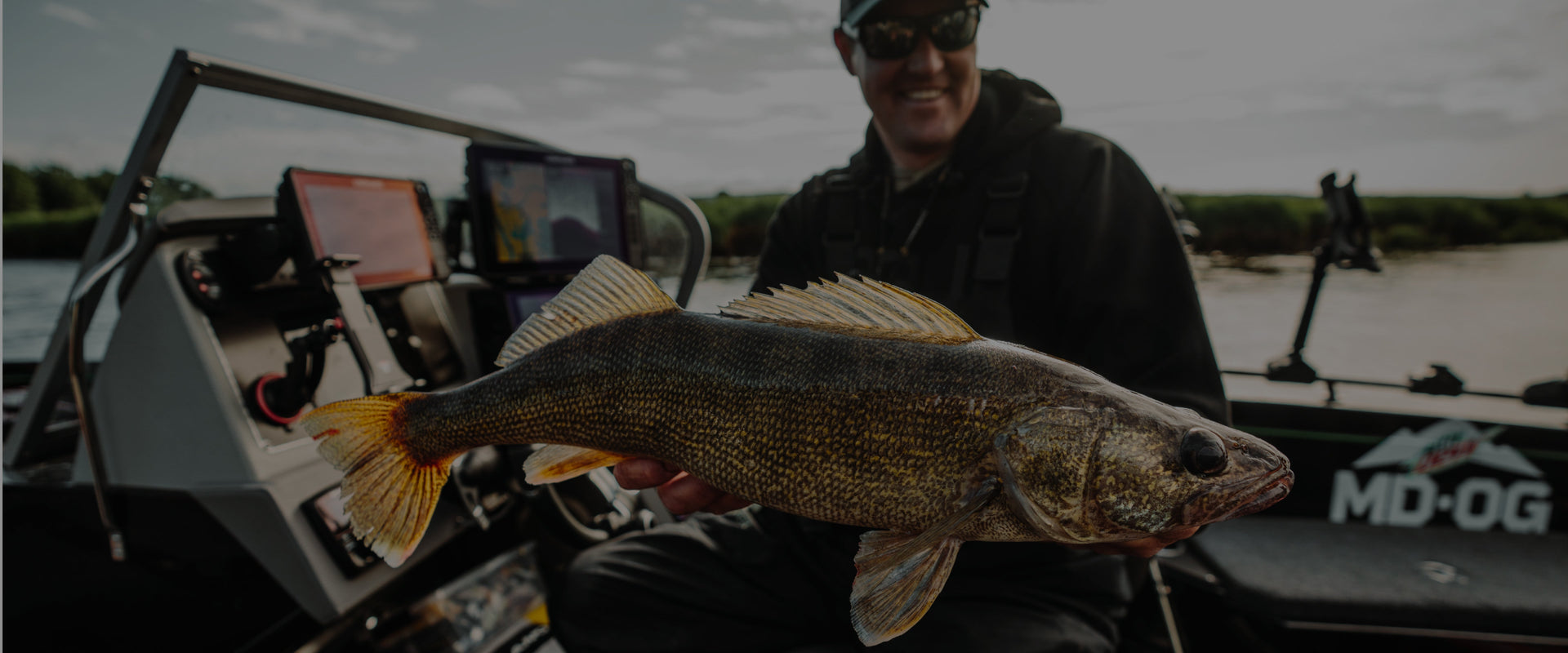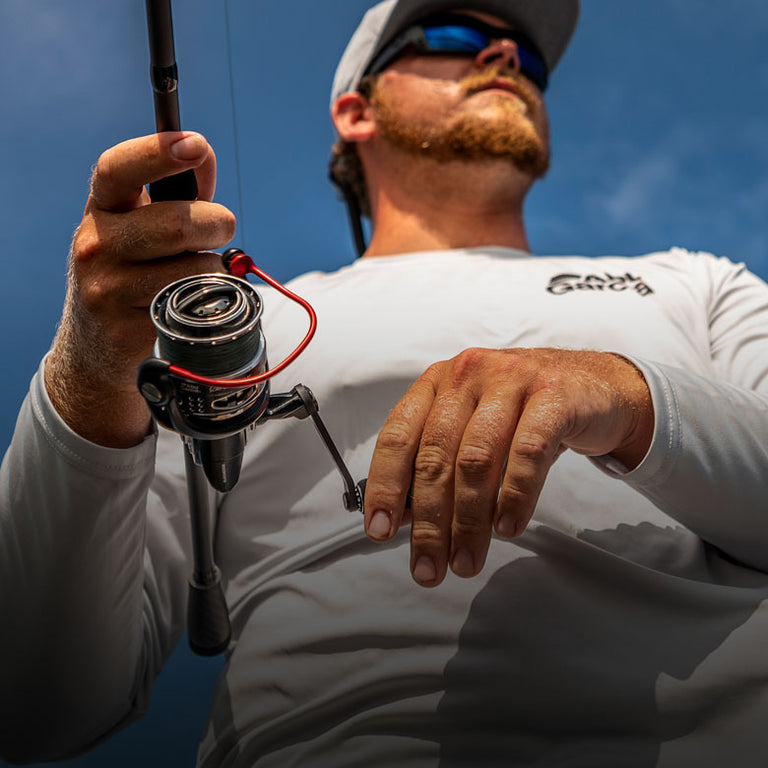
Get pro tips for catching walleye in rivers—find out which gear, bait, and techniques will give you the best chance...
Read More >
There’s no shortage of reasons to keep a few spinning reels in the boat. Perhaps you haven’t yet mastered a baitcasting reel or maybe the fishing conditions require you to downsize your bait selection to try to finesse a bite. Either way, despite the ease of use on a spinning reel, there are some common problems that even the most experienced anglers encounter when using them. Some of these problems can be lessened – if not avoided all together – by properly spooling line onto the reel.
It seems that just about every angler has his or her own idea on how to best spool a spinning reel. While some of the details may differ slightly, most of the important things are relatively similar.
To begin, it is important that you properly match the size of line you wish to put on your spinning reel to the size of the reel itself. Unlike baitcasting reels, spinning reels are for lighter line and downsized baits. Heavier monofilament and fluorocarbon lines do not perform well on spinning reels because the diameter of the line is large enough that the spooled line will jump off the reel spool when casting. This creates monstrous backlashes that are not easy to fix – plus it wastes time on the water.
When the situation requires anything larger than 10- or 12-pound test line, I prefer to use FireLine as the main line on my spinning reel. To do this, I spool some monofilament or fluorocarbon line directly onto the reel spool as backing (to prevent the braid from slipping on the spool when I have a fish on), then attaching the FireLine to the backing using a Uni Knot. The great thing about this system is that the FireLine, although it has a higher pound test, has the diameter of much lighter line.
Typically, depending on the fishing situation, I will attach a Berkley Trilene 100% Fluorocarbon leader directly to the FireLine (again, using the Uni Knot) or attach a barrel swivel to the FireLine and run a short leader from the swivel. The swivel helps negate any potential problems the leader line may have with line twist, which can affect manageability, but if the leader is too long, the swivel will get caught up in the guides and affect casting performance. Braid is super easy to manage and casts very well – plus the great thing is the durability of braid allows you to just change out leaders everyday instead of
respooling the entire reel.
But, if braid isn’t for you, you need to know how to put monofilament and fluorocarbon line on the reel. To begin, select a quality line with a pound test of less than 10 or 12 pound (depending on reel size, of course). Run the end of the line through the rod guides and wrap the tag end around the spool twice. Then, tie an over-hand knot in the tag end, wrapping the knot around the mainline as it comes onto the reel spool. Then tie and over-hand knot in the tag end and slide the knot down so that it rests just above the first knot.
After securing the knot by pulling it tight, trim the tag end so that ¼ inch of line remains above the second knot (this extra line keeps the knot from coming loose).
Close the bail so that the reel is engaged and ready to begin winding line onto the spool. If you have a friend available, have them hold the spool with the front side facing you, making sure that they keep plenty of tension on the line. If you are alone when doing this, try running the line through the pages of a phone book to keep the line tight.
I prefer that the line come off the spool counter-clockwise. The reason for this is because when you cast a spinning reel, the line comes off clockwise. By having the line come off the line spool counter-clockwise, it helps tame some of the line twist. Keeping tension on the line, I begin to wind the reel handle and fill the reel spool. Keep an eye on the reel spool to make sure that the line is filling the spool evenly and fill the spool within 1/8 to 3/16 of an inch from the edge. Too much or too little line will affect the reel’s performance. Once the reel is spooled, cut the line from the remaining line in the package and tie on your favorite lure.
Fishing with light lures and using a stop-and-go retrieve (like with shaky head jigs, for example) can result in line twist in both monofilament and fluorocarbon line. It can also be caused by improper use of line and lures that are not running correctly. Either way, if you experience this, you’ll want to release a long length of line behind the boat and drag it behind you until the line appears to be straightened out. This is especially important after catching a fish. If you don’t solve line twist, it can cause your line to become a mass of tangles and loops, something that will require a significant amount of time to unravel or cause you to have to cut the line off the spool and start over.
Fishing with a spinning reel opens up a lot of possibilities for many anglers. Easy to use and maintain as well as capable of carrying out the smaller and finesse presentations, your skills with a spinning reel will result in more fish caught all throughout the year. By spooling the reel properly and maintaining your line, your time on the water with a spinning reel in hand will be that much more enjoyable.